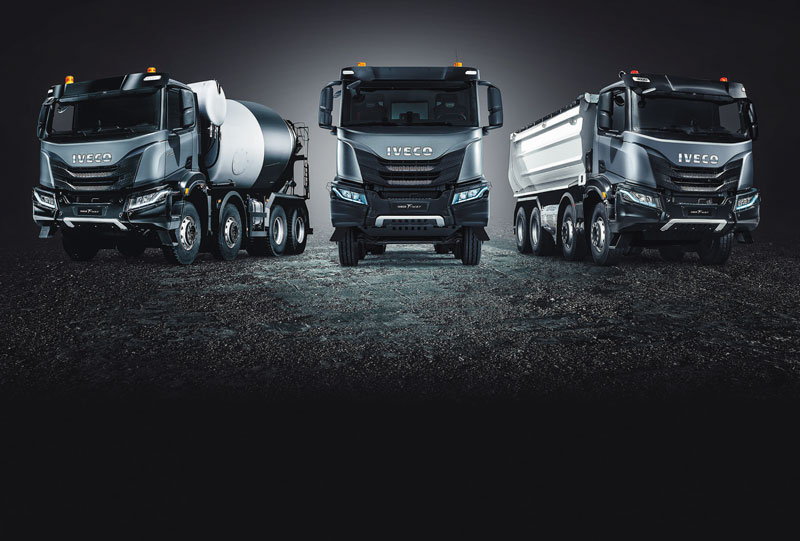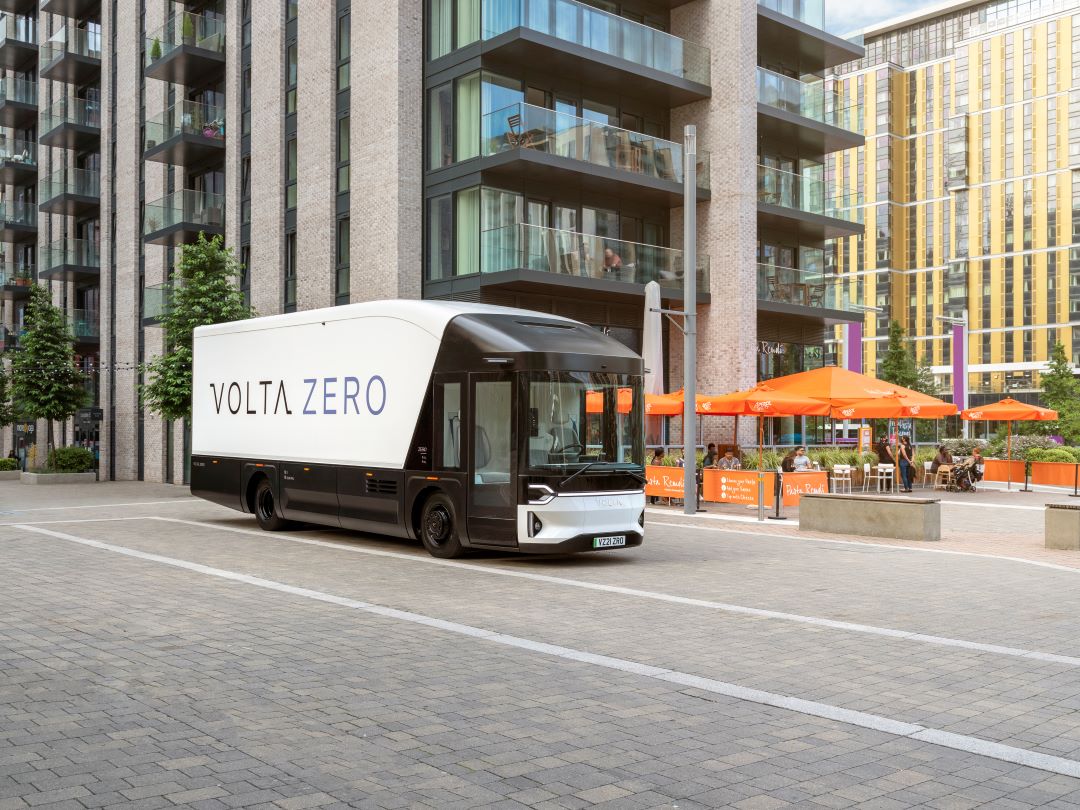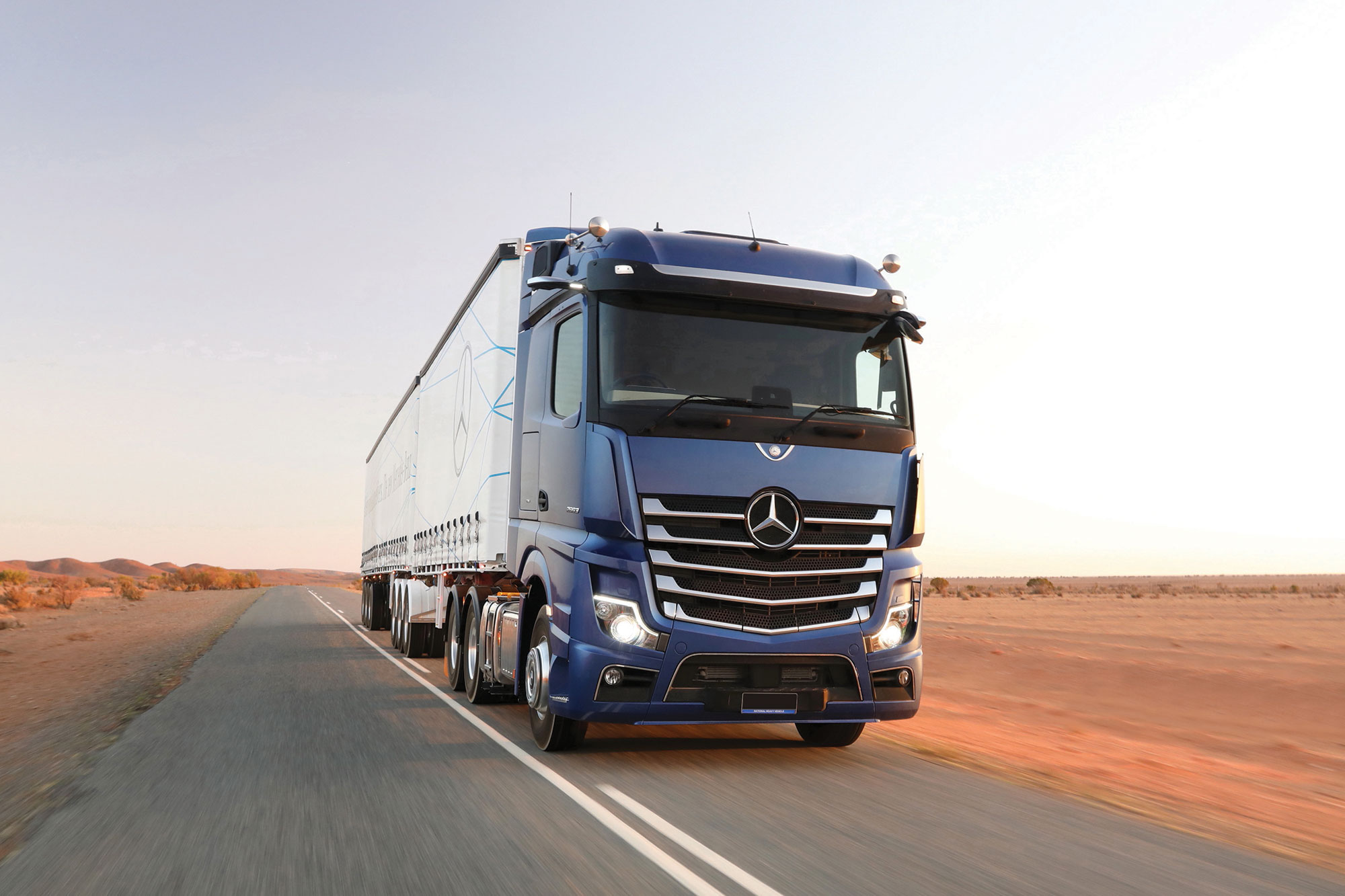
Trucking engines: useful insights to know before choosing your own
In today’s industry, it doesn’t matter what truck you’ve got. It seems that every manufacturer has got their own motor or they’re using a variant. In this video, we’re just going to quickly touch on I think the major four Motors. So stay tuned.
Okay. So you’ve decided you’re going to buy a truck. Okay? Whether you’re a fleet owner or whether you’re an owner, operator, you decide you want to buy your own truck or a fleet of trucks. So what do you do? You’re going to pick the truck you want, but every truck has a motor. So what motor are you getting?
In today’s industry, there’s basically the major four. There are four motor manufacturers, right? You’ve got Volvo, they’ve got the D 13. You’ve got Detroit. It’s got the DD-15, the DD-13, the 15 litres, 13 litres. You’ve got Cummins, you’ve got the X 15 and the X 1315 again, 15 litres, 13 litres. And you’ve got PACCAR. Right. Notice how I said PACCAR. I didn’t say, like Ronan says, it Pacard. It’s PACCAR.
Anyway, so we’ve got the Paccar motor. And those are the major four. So we’re just going to touch briefly on the Motors. I’m not a mechanic by any means. I can’t tear one of these things down and fix it, diagnose it, plug it in. I can’t do any of that. But I’m just going to give you a rundown on the four Motors. And I’ve driven all four. I have had all four out on the road. I’ve owned three of them, so I can at least give you what I know about three of them.
The only one I haven’t owned is the PACCAR Motor. And that’s what’s coming in the new Kenworth and not the new Kenworth. But they’re in the Kenworth and then the Peterbilts. I’ve owned a Volvo. I had a D 13. I’ve owned Detroit, and I’ve owned a Cummin.
So let’s start with the one I know the least about and that’s the Pacar motor. I think the Pacar Motors. It’s the newest motor on the block when they decided to start making their own Motors. Of course, they had their hiccups back in the early days.
Now, shame on me. I should have done a little more research on this. I don’t know what day or year that they started making Paccar Motors, but I know that they had them back as far as 15. Who knows? Somebody out there knows that. You will correct me as I’ve noticed. You’re really quick to do that. So let me know when they started, and I’ll be happy to make the corrections. The old Paccar Motors, the older ones. I got a friend of mine. He’s running a 17. I got another friend of mine, he’s running a 16. I know that those Motors there are plagued with EGR, DPF and sensor issues. It seems to be the norm at just about everything. But those Motors took a real kick in those years. What I do know is that the 18s and 19s got a little bit better after driving that next Gen and inspecting that motor. And with what? Kenworth, of course, you don’t always take the manufacturer’s word for it. But what they’re saying is that all the bugs that they pretty much had from the beginning up until the 2021 year for 2022 with the next-gen motor, they’ve got most of that hammered out.
Now, I don’t know anybody that’s got a next Gen motor, so I can’t ask them How’s your engine performing. Are you getting the mileage? Are you getting the maintenance, check engine light? But we will find somebody and we will do a video on it. I know that we’ve got a 22 W9 that we’re going to take a look at in the future that an owner-operator has purchased from the dealership next door. So we want him to put a few more miles on it so we can get a better perspective and give you a better report on what it’s doing. So stay tuned for that.
That’s the only way I can do this because I don’t own one. And I don’t know anybody that’s got one. But the next Gen Motors, the new Paccar Motors. They’re telling you you’re going to get over 9 miles per gallon. They’re almost guaranteeing it. Do I find that hard to believe? No, I’ll believe it. If they’re saying that they’ve got the bugs worked out and they’re going to get a nine-mile per gallon plus truck, no reason not to believe it.
I didn’t believe that I’d get 8.7 out of a Freightliner with a Detroit in it. So what the hell? I’ll believe that. So there you go. The Paccar motor reliability. I don’t know a whole lot. Like I said, I’ve never owned one. I’ve owned the other three, the Paccar motor I’ve never owned. So I can’t give you a great rundown on if it’s reliable. I do know that the 16 and the 17 that my friends own, they pull well, they drive well when they’re healthy. Mike is getting I think 7.4 or 7.5 out of his. Sean is getting just over seven out of his, and he’s got an 18-speed manual that he’s driving. So he’s getting over 7 miles per gallon out of it on an 18-speed manual transmission. So that’s not bad even with a manual. So there you go on the Paccar.
The next one we’re going to talk about, I say we like all of us were standing around talking about it. It’s just me and you. But the next one I’m going to talk about is probably a motor that I really like when it works, but it just about ran me into the ground. And that was the Volvo D 13, the 13 litres Volvo. Now Volvo does make a D 16. That’s a 16-litre motor, but unfortunately, they discontinued it in North America. You can’t get it here anymore.
They’re still making it, and they’re still using it overseas in Europe. And it’s a popular motor, and they seem to have things over there that are much more advanced than ours. And they’ve got them working over there. We just couldn’t seem to get them figured out here with the emissions and getting parts for them and the expense to fix them. They’re expensive as hell to fix. So we’re not doing the D 16 motor. There is a D 12, and there is a D 11. As far as I know, nobody’s running them.
I do understand, though, from back in the day or from years ago, the D 12 and the D 11 Motors were bulletproof. You couldn’t kill them. They would run like hell. And there were great Motors. But for now, we’re going to talk about the D 13. Now my D 13 was out of 14, 2014. I bought it brand new. And further say, the first two years I had that truck, it performed really well. I had a heavy spec truck. I had an 18-speed manual transmission. I had 373 rear ends in it. Horsepower was at 505, and the torque was at 1875 or 1850 if I recall. And that truck ran me. In the beginning, I was getting 7.47 .5 miles per gallon out of that truck, and I was impressed with that. After about two years, I had every problem you can think of. Not only did I blow the motor up, that was because I abused it, as you know, but other than that, I had every other issue sensors, EGR, DPS, computer problems, ECM, wiring. If there was anything on that truck that didn’t break, that list is about that long. Okay, the list of that went wrong was there. And there’s the still. And whoever bought it next, I’m sure he’s probably fixed those. So good for him. Now, today’s D 13, we’re talking 21s because we’ve got 21s in the yard here. Et runs the 2021s. They got a couple of 20s, but they got some 21s. We do not have 22. From what I understand, Et is going to be converting straight to Freightliners only, so we will not be getting any 2022. So I’m only going to give you what we’ve got on the 21s. I do know that the three top-performing Volvo’s in our fleet, all three of them across the board, are running 8.5 miles per gallon. And these are guys that go everywhere we’re talking. They’re not just running flat ground. These guys go everywhere. They go California, they go to BC, they’re down to Florida. These guys go out there. They’re on our van division and they run. So they’re getting 8.5 miles per gallon. I’d be happy with that.
The D 13 Motors that we have spec out are all at 455 horse. They’ve got the 12-speed automated transmission with overdrive. They’ve got 264 rear ends in them, and that’s what they’re spec. And they’re built for mileage. And that’s what they’re getting. They’re getting great mileage now on a performance level, the D 13, I can speak personally about this. It does perform well. It pulls good, it drives good. It’s quiet as hell. I mean, like literally, there are times where you got to put your hand on the dash to make sure that things Idling.
That’s how smooth and how quiet there. And I really like that. I’m tired of the old N 14 Cummins, where if you’re sitting on the phone, you got to scream into your phone, so the person who can hear. These things are quiet. The D 13 motor, it’s a good motor, but I do understand that Volvo is still having problems with electrical. I think they’ve got pretty much all the emissions worked out, but they’re still having electrical ECM. These aren’t cheap items. Like you’re replacing an ECM, you’re looking at some Bucks.
So when I take a D 13, I’ve still got a bit of a sour taste in my mouth from the Volvo that I had. When I go back into another Volvo, the price and the conditions would have to be absolutely perfect before I would touch another Volvo. Has it been presented to me? That option has not been presented to me yet, and I haven’t found it. I actually haven’t gone looking for it. So would I take a D 13? Probably not unless I had the perfect conditions.
It’s a good motor. It runs, it does what it says it’s going to do. It’s getting 8.5 miles per gallon. It’s a moneymaker. So there you go. D 13 Volvo.
Okay, so we’ve got two Motors left. And these are the two big boys on the block. We’ve got Cummins and we’ve got Detroit. We’re going to talk about Cummins first.
The current Cummins is the Xs called the X 15. If it’s a 15 metre, they’ve also got a 13-litre version. From what I understand, though, I think the X 15 is the more popular choice with drivers. Everybody’s taking them.
This is a completely revamped repackage deal on the old ISX. The ISX motor was garbage when they brought the emissions out and they started running that ISX motor. I had a 2008 ASX. I also had a 2012 Isa and they were crap. Don’t get me wrong. When they were running and they were healthy, they lived up to the Cummins names. They were monsters and they ran like hell. They pulled great. They didn’t get the greatest fuel mileage, but they really did perform well.
You could Jackrabbit yourself up a Hill with 45,000 pounds on the trailer and that truck just wanted to go and it was happy. So those ISX Motors, they had too many problems with them. It’s almost like come and say, we just can’t make this work, scrap it. Let’s take what we know is good, take it to the X 15. And it seems that that’s what they’ve done. They’ve got the X 15, the X 13. Now, from what I know, I do have a friend that’s got one.
He’s got it in a 2022 International LT and he loves it. So far he’s got about 24 to 25,000 miles on this thing. He’s got an 18-speed manual. So again, his fuel mileage isn’t going to be up there, but he’s still in the high sevens, right, he’s in the 76 to 78 area. Now on an 18-speed manual, he’s got it jacked out at 550 horse at 1870 FTP torque and he’s still getting high sevens mileage out of it and it does pull. It pulls like Jack the Bear. It is a great motor. He says he loves it. He wouldn’t trade it for anything. I suggested maybe he’d lower the horsepower and change a couple of the settings and he’d probably get himself up closer to eight. But he’s a young guy and he wants the power. He wants to feel it. And he wants to shift the gears and he wants to go like hell. He will learn one day that fuel mileage wins the race at the end of the day.
The Cummins motor is very well built. From what I understand, I don’t own an X 15. I have taken one for a drive. They are responsive and they are torquey as hell. You put your foot into this thing and it wants to go. You literally throw a chain around a house and you’re going to rip it off the foundations. That’s the type of motor it wants to go. It wants to work. It’s a great puller. So the X 15 is the Cummins. I almost wish that we could go back to the N 14 Cummins, the pre emission Cummin and we could make those work with today’s trucks because then all the old-timers would be happy and the new guys would be happy getting the mileage. But unfortunately, we can’t. We’re stuck with the X 15, the new Cummins. But the platform seems good.
Cummins is obviously a huge company. They seem to know what they’re doing. They’re spending the money on research. They’re listening to the drivers. And it seems for now they’ve delivered what they said they were going to do. They’ve given us a new motor. It’s been out a few years, so most of the bugs in the first year and a half or two years have been worked out of it. It’s been out. It’s performing it’s doing well. So your Cummins motor, if you’re looking at taking a Cummins in here, I would say, yeah, go with the automatics. Stay away from the manuals. You automatically get you better fuel mileage. But would I take a Cummins, probably? I don’t have a cost for maintenance on a Cummins. I don’t know. Say, for example, if you blow an X 15, well, if you do, it’s probably under warranty. But if you got one and it’s not under warranty and you blow one up, I do not have a cost of what you are for an infrastructure replacement on these. One of you guys, I’m sure is going to blow up your motor and you’ll let me know. So let me know when you blow your motor. I hope it doesn’t happen. But if it does, let us know what you end up with, whether it be Canadian or The US. We’ve got Ronan in the office there with the old Google Tron. He can do the conversion and figure it out is the money nerd that he is. Whether a US driver, Canadian driver, give us the cost, we’ll figure it out, we’ll put it out there. So that’s the Cummins.
So the last one on the agenda here is the other big boy on the block and that’s Detroit. Detroit has been around a long time. I think between them and Cummins, they’ve been making Motors for probably about 50 years, so they should have it figured out. I can speak personally about this because I just did that challenge in the Freightliner and it has the DD 15 motor in it, the Detroit motor. It’s 15 litre. Ours is set at 465. The horsepower was at 1720. Good motor, 12-speed automatic with overdrive. I was happy with the Detroit. I was actually happier with the Detroit than I thought I was going to be. I thought that the Volvo was going to outperform and they didn’t. The Detroit right now are actually outperforming the Volvo. If you spec them the same like number for number, spec them the same. It’s just my personal opinion, but based on the numbers that we have available to us, we have 2020s and 21 Volvo.
We have 21s and 21 Cascades. We’ve got the Detroit and we got the D 13s. I will say honestly, based on the numbers that we have, the Detroit is getting better fuel mileage than the Volvo and they are outperforming. They are also costing us less money per mile to run and maintain than the D 13 is. Ronan, at some point will probably have to do a video and give you those numbers. I don’t have them, but I do know that the Detroit are outperforming the Volvo.
I like this DD 15 motor. I really do along the same lines as the Volvo. Being quiet. This thing is super quiet. Not like that guy. He’s really noisy. But when I’m going down the highway at 61, 62, 65 miles an hour, the motor is just humming. You almost hear background noise over the motor. And you don’t usually get that in trucks. And when it’s Idling, it sits there idling. A friend of mine Gordy’s got a C 13 cat. Now his truck was sitting beside the Freightliner and they were both Idling and we couldn’t hear the Detroit.
We could hear the cat. And we were standing in front of the cat. We were in front of his truck and we were just talking and we were talking like this because we couldn’t talk over the cat. You could literally that motor could be sitting right here beside me, that Detroit could be sitting here beside me and I could be filming this video. You will hear it, but you will hear me over it. And that’s impressive. So they’ve really knocked down the sound. The quality of the sound is really good. They’re quiet. S
So at the end of the day, are we taking up Detroit? I would take a Detroit. It runs well. I had no performance issues. Like I said with it, I really enjoyed the automatic. I wasn’t used to it. But more than that, I liked how the truck performed or how the engine performed, where it set its RPMs and how the engine pulled going uphills. I just came back from a trip from Delta BC. So I came across the Coke. I came across the mountains. That motor did really well. Were there other trucks passing me going up Hills? Yes. Did I have more fuel at the top of the Hill than them? Hell, yes. Does it pull? Yeah. It got me up the Hills. It got me where I wanted to go. Did it pull? And the RPMs went up and it did everything it was supposed to? Yes.
Would I buy a Detroit? I would buy a Detroit. And this is just my personal opinion, out of the four manufacturers, knowing also that I’m a little shy on the Paccar, I would take the Detroit if I had to choose if somebody gave me a truck and said, spec it out. Here you go, this is the money. I would put the Detroit. I would put that DD 15 in it. It got the performance. They’re cheaper to run. They get better fuel efficiency. They don’t break down as often. Would I take it? Yeah, I would take the Detroit motor. I think that would be my personal choice anyway.
There you go. There’s the four. There’s actually a fifth motor, and that’s the Navistar that’s out of the international. But we’re not going to talk about that because it’s nothing but a boat anchor. From what I understand, for the 2022 year, you can’t even get them. They’re going to stop making them, and they’re all going to come with the Cummin X 15 in them anyway.
So there you go. There are the four Motors we touched quickly on the fifth. You make your choice. It’s what you want to do with it, where you’re going to go and what your expectations are. Don’t take my word on it. I’m not a professional, okay? I’m a professional driver. I’m not a professional engine builder, but I just drive them and I’ll give you my opinion on what I think of them.
So there you go. Hopefully, this will help you out in some way. Make a choice and do your research. I do suggest that before you make any choices or decisions, do your research. Research the shit out of these Motors, because this is what’s going to get you from the start line to the finish line. Your engine and your tires, research them both. So there you go. Thanks for watching. Make sure you hit the subscribe button. Give us a like, hit that notification button, so the next time I decide to say something, it pops up on your screen and you’ll know about it.
See you down the road. Be good.



